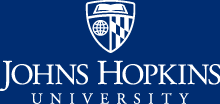DMSE Seminar Series: Leora Dresselhaus-Marais
Description
Leora Dresselhaus-Marais, an assistant professor of materials science and engineering at Stanford University, will give a talk titled "New Microscopes to Visualize 3D Dynamics in Subsurface Defects" for the Department of Materials Science and Engineering. Dresselhaus-Maraisalso also has a courtesy appointment in Mechanical Engineering and a term appointment in Photon Science at the SLAC National Accelerator Laboratory. Todd Hufnagel is faculty host.
Zoom meeting information is on the DMSE event page.
Abstract:
Materials strengthen or shatter as they respond to their surroundings via multiscale dynamics from defects at the atomic scale. For centuries, scientists and engineers have struggled to connect a material's fundamental properties directly to its structure. Today, we understand that line defects (dislocations) pattern into 3D hierarchical networks that dictate the microstructure, setting the properties and dynamics of the system. However, our understanding of these dynamics is limited by a lack of experiments to directly resolve how dislocation pattern deep beneath a material's surface.
My group has developed time-resolved dark-field X-ray microscopy (DFXM) to directly image dislocations and their collective dynamics in real-time, hundreds of micrometers beneath any surface. In this talk, will describe the optical, theory, and analytical frameworks that we developed to image and interpret these subsurface dynamics from ms-fs timescales. Using this new framework, I will then present results showing a new view of how dislocation boundaries evolve in single-crystal aluminum at temperatures that have long been inaccessible to theory and experiments. Zooming in on the dislocations that comprise a tilt boundary, I will show how the stochastic motion of the boundary dislocations over 10 minutes reveal how it loses its inherent stability at 0.99 Tm. This new capability opens new opportunities to establish the fundamental science underlying our understanding and control of defects, for applications in sustainable manufacturing – including new work exploring how to decarbonize steelmaking.
Who can attend?
- General public
- Faculty
- Staff
- Students







